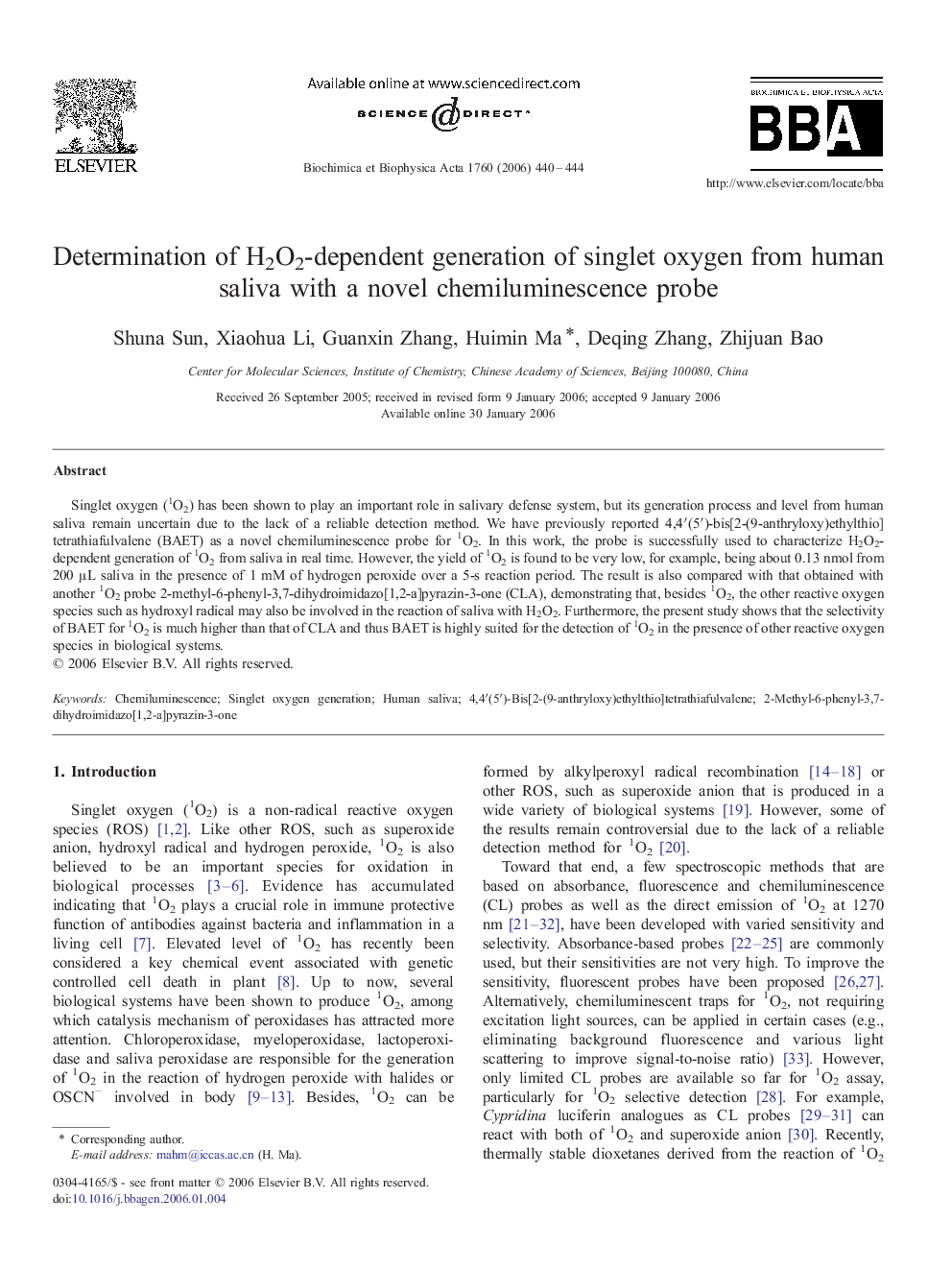| Article ID | Journal | Published Year | Pages | File Type |
|---|---|---|---|---|
| 1948949 | Biochimica et Biophysica Acta (BBA) - General Subjects | 2006 | 5 Pages |
Singlet oxygen (1O2) has been shown to play an important role in salivary defense system, but its generation process and level from human saliva remain uncertain due to the lack of a reliable detection method. We have previously reported 4,4′(5′)-bis[2-(9-anthryloxy)ethylthio]tetrathiafulvalene (BAET) as a novel chemiluminescence probe for 1O2. In this work, the probe is successfully used to characterize H2O2-dependent generation of 1O2 from saliva in real time. However, the yield of 1O2 is found to be very low, for example, being about 0.13 nmol from 200 μL saliva in the presence of 1 mM of hydrogen peroxide over a 5-s reaction period. The result is also compared with that obtained with another 1O2 probe 2-methyl-6-phenyl-3,7-dihydroimidazo[1,2-a]pyrazin-3-one (CLA), demonstrating that, besides 1O2, the other reactive oxygen species such as hydroxyl radical may also be involved in the reaction of saliva with H2O2. Furthermore, the present study shows that the selectivity of BAET for 1O2 is much higher than that of CLA and thus BAET is highly suited for the detection of 1O2 in the presence of other reactive oxygen species in biological systems.
